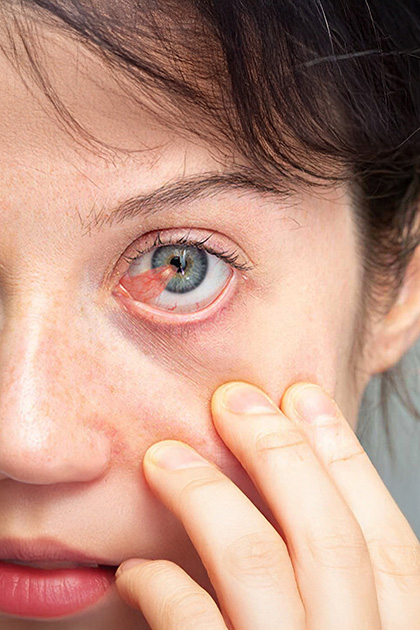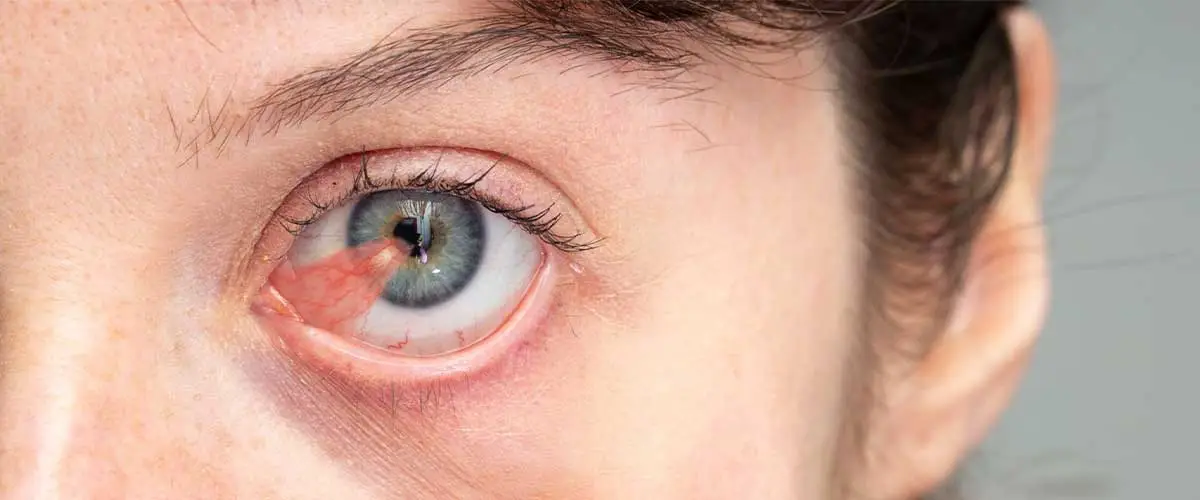

Pterygium is a triangular-shaped tissue growth commonly known as “eye tissue” that extends from the white part of the eye toward the transparent corneal layer. It typically develops due to environmental factors such as prolonged sun exposure, wind, dust, and dry air. If it progresses, it can block the visual axis and lead to visual disturbances. Treatment is planned based on the size of the pterygium and the severity of the patient's symptoms.
Overview of the Treatment
Appears as tissue growth from the inner part of the eye
May cause stinging, redness, burning, and cosmetic discomfort
Long-term UV exposure is a major risk factor
Mild cases may be managed with eye drops
Surgery is required when vision is at risk
Because the tissue can regrow, special techniques are used during surgery
Wearing sunglasses helps reduce the risk of development and recurrence
Brief Summary of the Treatment
Preventive Care: Protection from UV rays helps reduce recurrence
Aesthetic and Functional: Improves both appearance and visual quality
